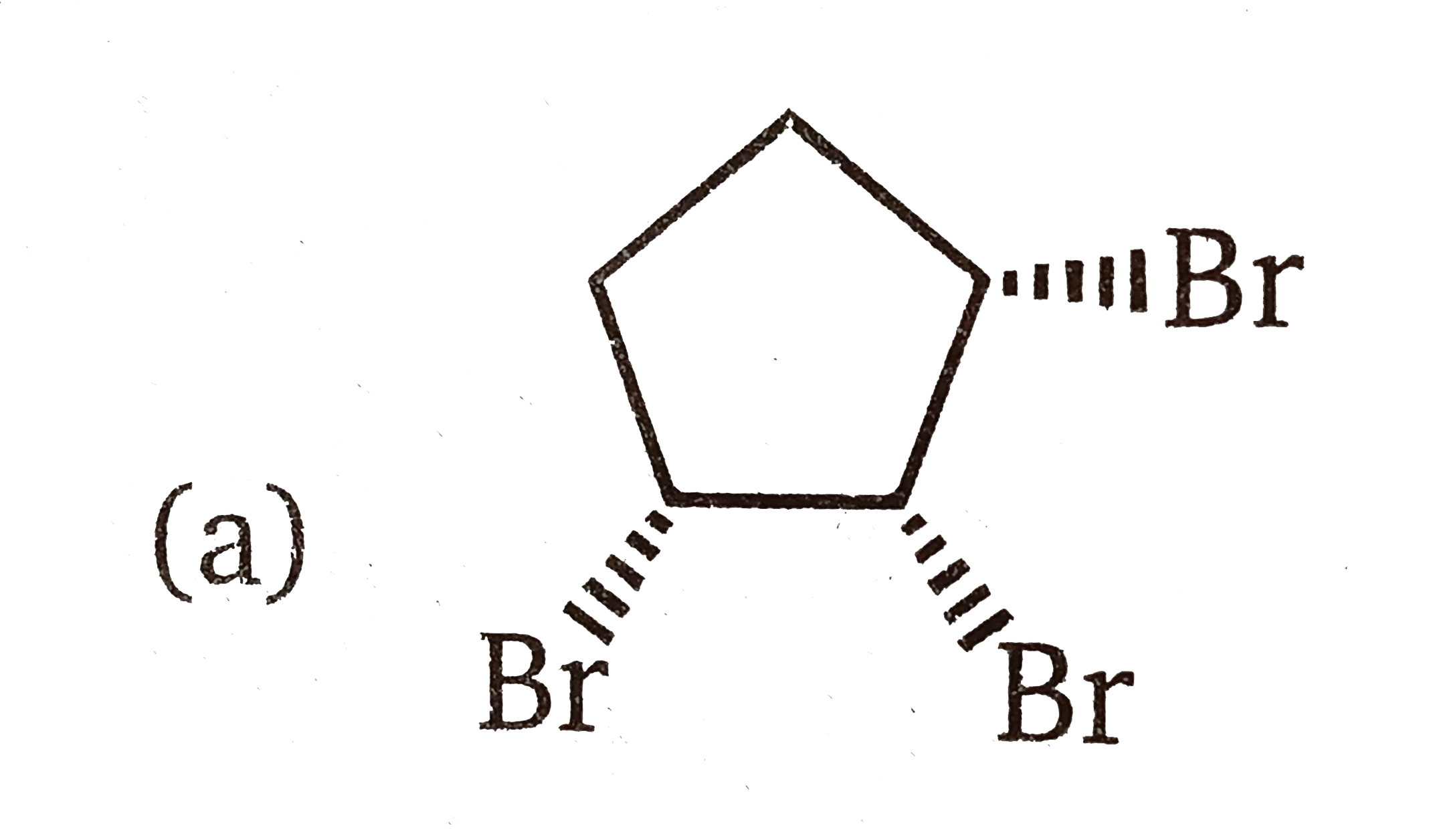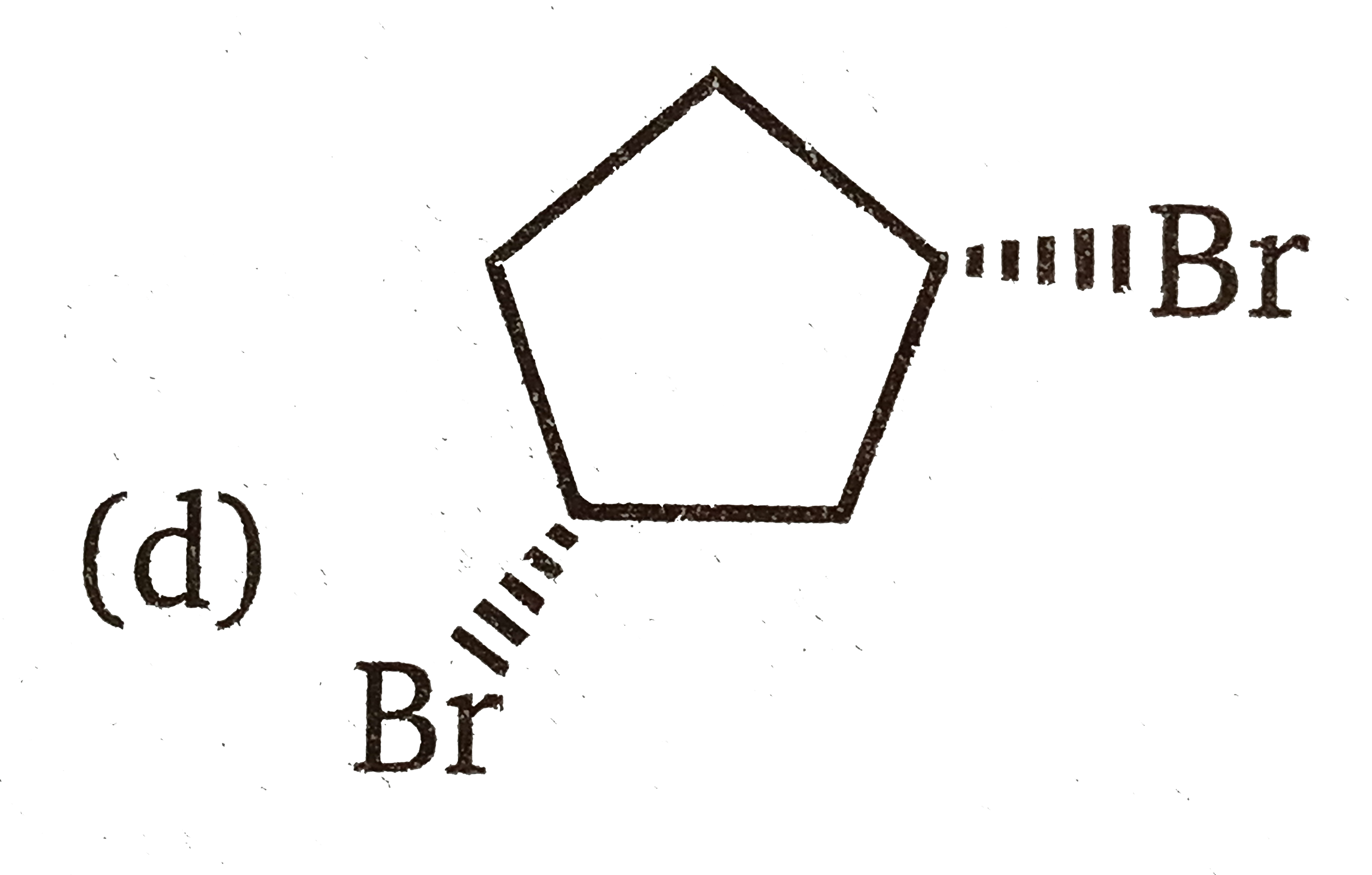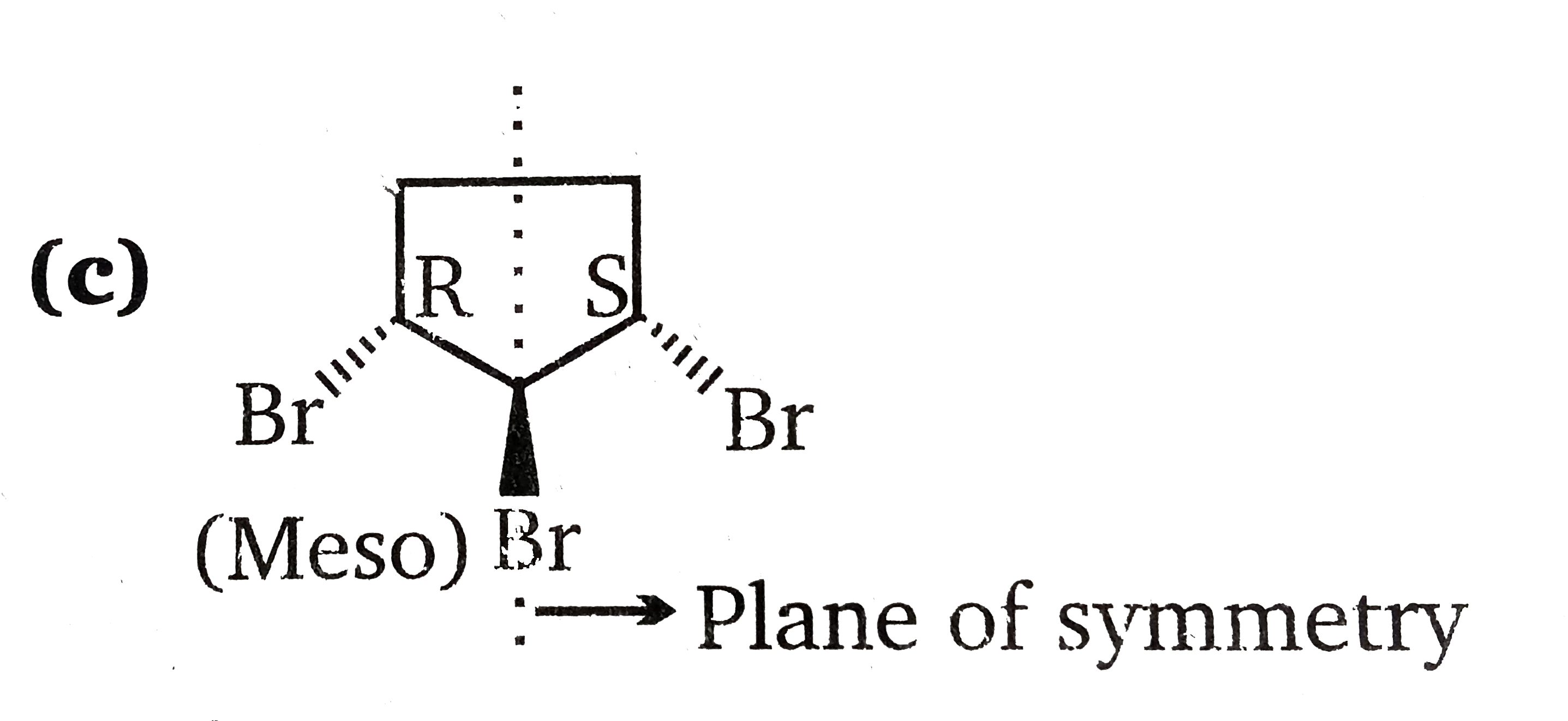(R)-3-bromocyclopentene (shown below) reacts with Br2/CCl4 to form two products, Y and Z, Y is not optically active (does not rotate plane-polarized light). What is the structure of Y





The correct Answer is:C

Anti addition of halogen takes place on alkane.
Topper's Solved these Questions
- BOOK - MS CHOUHANCHAPTER - HYDROCARBONS (ALKENES)EXERCISE - Level 1 (Q.1 To Q.30)1videos
HYDROCARBONS (ALKENES)
- BOOK - MS CHOUHANCHAPTER - HYDROCARBONS (ALKENES)EXERCISE - Level 1 (Q.61 To Q.90)2videos
HYDROCARBONS (ALKENES)
- BOOK - MS CHOUHANCHAPTER - HYDROCARBONS (ALKANES)EXERCISE - Level 1 (Q.31 To Q.50)1videos
HYDROCARBONS (ALKANES)
- BOOK - MS CHOUHANCHAPTER - HYDROCARBONS (ALKYNES)EXERCISE - Level 1 (Q.1 To Q.30)2videos
HYDROCARBONS (ALKYNES)
Similar Questions
(W) and (X) are optically active isomers of C5H9Cl(W) on treatment with one mole of H2 is converted to an optically inactive compound (Y). But (X) gives an optically active compound (Z) under the same conditions Give the structure of (Y) and configuration of (W),(X) and (Z) in Fischer projections.
View SolutionWhen trans-2-butane reacts with Br2/CCl4, X number of products are formed. Whereas when trans-2-butene reacts with HBr Y number of products are formed . Report your answer as Y X .
View Solution
Knowledge Check
- Question 1 - Select One
An organic halogen compound X on hydrolysis using aqueous KOH gives Y which liberates H2 gas with metallic sodium. X is optically active whereas Y does not rotate the plane polarized light, so X is possibly
ACH3−CH2−CH2−CH2−ClBCH3−CH3∣−∣BrCH3CCH3−CH2−H∣C∣OH−CH3DCH3−C∣CH3H−CH3∣C∣Br−H - Question 2 - Select One
3-Hydroxybutanal is formed when (X) reacts with (Y) in dilute (Z) solution. What are X, Y and Z?
ACH3CHO,(CH3)2CO,NaOHBCH3CHO,CH3CHO,NaClC(CH3)2CO,(CH3)2CO,HClDCH3CHO,CH3CHO,NaOH - Question 3 - Select One
 possible products Br2/CCl4−−−−−→(y)products
possible products Br2/CCl4−−−−−→(y)products
The number of possible products for x and y is:A2,4B3,5C3,6D3,4
(W) and (X) are optically active isomers of C5H9Cl (W) on treatment with 1mol of H2 is converted to an optically inactive compound (Y), but (X) gives an optically actgive compound (Z) under the same conditions. Give the sturcture of (Y) and the configurations of (W),(X) and (Z) in Fischer projections.
View Solution(W) and (X) are optically active isomers of C6H9CI. (w) on treatment with 1 mol of H2 is converted to an optically inactive compound (y) but (x) gives an optically active compound (Z) under the same conditions. Give structure of (Y) and configurations of (W) ,(X) nad (Z) in Fischer projections.
View SolutionA carboxylic acid of the formula, C3H5O2Br is optically active. What is its structure?
View SolutionA pleasant smelling optically active ester (A) has M.W. = 186. It does not react with Br2 in CCl4 . Hydrolysis of (A) gives two optically active compounds (B) soluble in NaOH and (C). Compound (C) gives a positive iodoform test and on warming with conc. H2SO4 gives (D) (Saytzeff-product) with no geometrical isomers. (C) on treatment with benzene sulphonyl chloride gives (E) which on treatment with NaBr gives optically active (F). When Ag+ salt of (B) is treated with Br2 ,racemic (F) is formed. Give the structures of (A) to (F).
View SolutionAn optically active compound [A] C5H13N reacts with alkaline CHCl3 to give an optically active, compound [B]. [A] also reacts with nitrous acid to give an optically inactive alcohol [C] C5H11OH as the major product. What would be the structure of [A]?
View Solution

